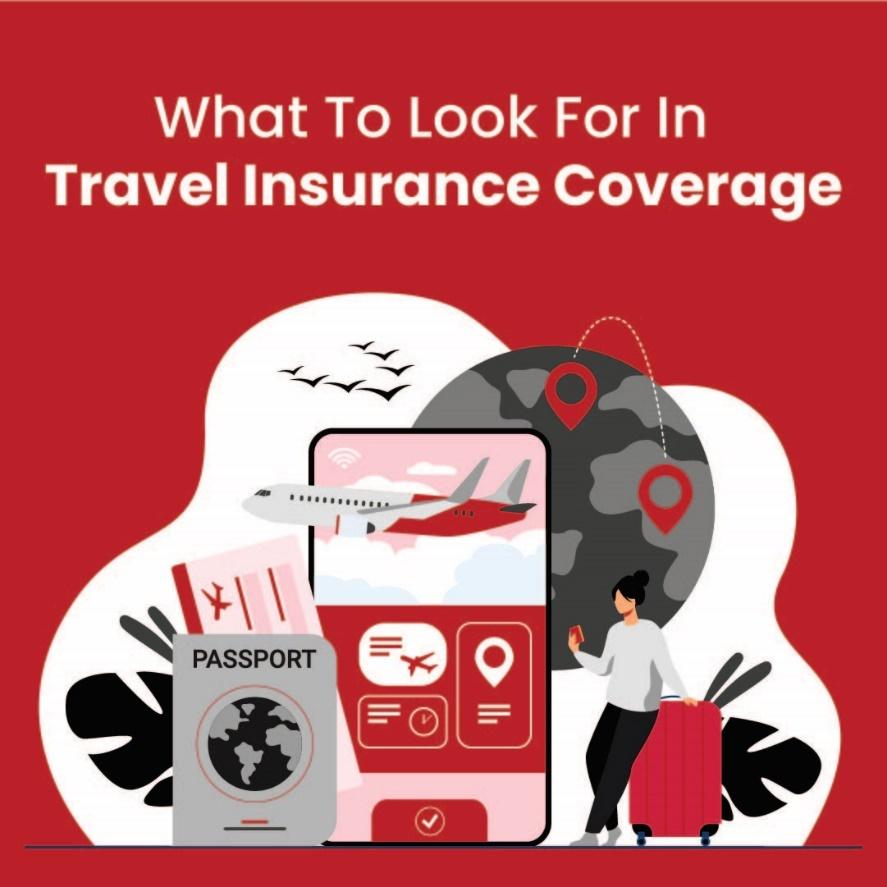Imagine booking the perfect vacation. Your flights are set, the itinerary is packed with exciting activities, and your hotel overlooks the ocean. Then, a few days before departure, an unexpected illness forces you to cancel everything. You assume you’re covered by your credit card travel insurance in Canada, only to find out that the cancellation policy is limited and won’t reimburse you for all your expenses.
Many Canadians believe their credit card travel insurance is enough, only to discover the gaps when it’s too late. While certain top-rated cash back credit cards and premium travel cards offer extensive coverage, standalone travel insurance often provides broader protection. The key question is: do you need both, or is your credit card travel insurance enough?
What Does Credit Card Travel Insurance Cover?
Most cash back cards with travel insurance provide a range of benefits, but the coverage depends on the card issuer and the type of card. Typically, a premium Amex cash back or travel card will include trip cancellation, trip interruption, emergency medical, lost baggage, and rental car insurance.
However, there are limitations. Many credit card travel insurance policies require you to pay for your travel expenses using the card to activate the coverage. Age restrictions may apply, particularly for emergency medical coverage, and coverage periods are often shorter than standalone policies.
For frequent travellers, relying solely on credit card travel insurance in Canada can be risky. If a medical emergency abroad exceeds the coverage limits or if a trip cancellation claim is denied due to policy exclusions, travellers may face significant out-of-pocket expenses.

Standalone Travel Insurance: A Comprehensive Safety Net
Unlike credit card travel insurance, standalone travel insurance policies provide a tailored approach to coverage, allowing you to select protections that align with your specific needs. Whether you’re looking for extended medical coverage, higher trip cancellation limits, or protection for pre-existing medical conditions, standalone policies offer the flexibility that many cash back card insurance plans lack.
For frequent travellers or those embarking on extended trips, the limitations of top-rated cash back credit cards with built-in travel insurance can become apparent. Many credit card travel policies only cover short trips, typically ranging from 15 to 30 days. If you’re planning a months-long adventure, standalone insurance is often the only viable solution to ensure you’re protected throughout your journey.
Additionally, credit card travel insurance tends to exclude high-risk activities. If you’re an adrenaline seeker planning to go skiing in the Rockies, scuba diving in the Caribbean, or trekking through remote locations, your Amex cash back card’s insurance may not provide coverage for accidents related to these activities. In contrast, standalone providers often allow you to customize policies with adventure sports add-ons, ensuring comprehensive protection.
Beyond medical coverage, standalone travel insurance often includes benefits such as coverage for lost or stolen baggage, trip interruptions due to unforeseen events, and emergency evacuations. While cash back card travel insurance can be useful for basic coverage, standalone insurance offers a more robust and personalized safety net for travellers who prioritize peace of mind.
Additionally, families travelling together may find better coverage through a standalone policy, as many credit card travel insurance policies only cover the cardholder and, in some cases, their spouse and dependent children.
Comparing Costs: Is Credit Card Travel Insurance Enough?
For many Canadians, the idea of getting travel insurance bundled with a cash back card or rewards credit card sounds like an unbeatable deal. The coverage comes at no extra cost beyond the card’s annual fee, making it seem like a convenient and cost-effective solution. However, while credit card travel insurance can provide peace of mind, it isn’t always the best or most comprehensive option.
Most top-rated cash back credit cards and premium travel cards in Canada include some level of travel insurance. This may cover emergency medical expenses, trip cancellations, lost baggage, and rental car insurance. The coverage limits and eligibility criteria vary between providers, making it essential to read the fine print. Many policies, for instance, require the trip to be purchased entirely with a credit card for coverage to apply. Some also impose age restrictions, which could limit protection for older travellers.
The price of standalone travel insurance varies widely based on factors such as age, trip duration, medical history, and coverage level. A traveller with pre-existing conditions, for example, may find that credit card travel insurance excludes their condition, making standalone coverage a necessity.
For Canadians who travel frequently, an annual multi-trip policy might offer better value than purchasing separate policies for each trip. This is especially true for those who want higher coverage limits or additional protection, such as adventure sports coverage or trip interruption, for work-related reasons. However, if an Amex cash back or travel rewards card already includes comprehensive insurance, purchasing extra coverage may not be necessary.
Ultimately, deciding between credit card travel insurance and standalone coverage depends on individual travel habits and risk tolerance. While credit card insurance provides a no-cost safety net, it may not always offer the same depth of protection as a paid policy. Before relying on credit card coverage alone, Canadians should compare benefits, check for exclusions, and assess whether the included insurance meets their needs. By doing so, they can ensure that they’re protected while making the most of their cash back card and travel rewards.
What to Look for in Travel Insurance Coverage
When choosing between credit card travel insurance and a standalone policy, travellers should take the time to carefully review several critical factors to ensure they are adequately protected during their journeys.
One of the first aspects to consider is emergency medical coverage. It is essential to determine whether the policy covers high-cost medical emergencies that can occur while travelling abroad, particularly in countries where healthcare can be extraordinarily expensive. Additionally, reviewing any exclusions related to pre-existing conditions is crucial, as these can impact a traveller’s ability to receive coverage when they need it most. Understanding the medical coverage limits and stipulations will help avoid unexpected out-of-pocket expenses.
Next on the list is trip cancellation and interruption coverage. This section of the policy outlines the coverage limits and the specific scenarios under which a traveller can cancel or interrupt their trip without suffering significant financial losses. It’s important to know if the policy covers cancellations for non-medical reasons, as life can often lead to unexpected changes that might require a last-minute cancellation of travel plans.
Baggage loss and delay are other essential factors to examine. Travellers should assess whether the policy’s lost or delayed baggage claims are sufficient to replace essential items during a trip. Baggage delays can cause significant inconvenience, and having adequate coverage can ease the financial burden of replacing necessary items while waiting for delayed luggage.
Lastly, if planning to rent a vehicle abroad, it is vital to understand the rental car insurance provisions within the policy. This includes looking for collision and liability coverage to protect against potential damages or accidents during the rental period. Some policies may offer comprehensive coverage, while others may have significant gaps requiring additional considerations.
For American Express cashback cardholders, especially those with premium travel cards, it’s worth noting that these cards may provide extended coverage. However, the specific details can vary significantly by card, so a thorough examination of the terms and conditions is imperative. By taking the time to review these critical aspects, travellers can ensure that they aren’t caught off guard when making a claim, allowing for a more enjoyable travel experience.
Should You Rely on Credit Card Travel Insurance Alone?
For short domestic trips, credit card travel insurance in Canada may be sufficient. Travellers who have a comprehensive travel rewards card with strong coverage might not need additional insurance for standard vacations. However, for international travel, extended stays, or trips with expensive prepaid bookings, a standalone policy offers extra peace of mind.
Ultimately, the decision comes down to how often you travel, the destinations you visit, and your personal risk tolerance. Comparing credit card travel insurance with standalone policies before each trip ensures that you have the right coverage for your specific travel plans.
Conclusion: Making the Right Choice for Your Travels
Travelling should be an exciting experience, not a stressful one filled with financial uncertainties. While credit card travel insurance in Canada offers a valuable perk, it may not always be enough to cover every unexpected event.
Understanding what’s included, what’s missing, and when to purchase additional coverage ensures that Canadian travellers can explore the world with confidence, knowing they are fully protected. Whether through a top-rated cash back credit card or a standalone policy, having the right insurance in place can make all the difference when the unexpected happens.
Where To Find The Best Credit Cards
Great Canadian Rebates is an online platform that lets you compare credit card options available in Canada and apply for the one that best suits your needs and requirements. You can browse travel credit cards and find the best Canadian cash back cards that add value to your purchases.


